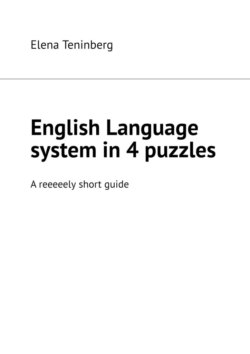Читать книгу English Language system in 4 puzzles. A reeeeely short guide - - Страница 4
Let’s get started
ОглавлениеI have divided my talk into the following sections: I will start off with types of verbs, then move on to formats, look briefly at types of time and finely tenses.
1. TYPES OF VERBS
To begin with, I would like to examine in some detail types of verbs.
To describe an action in English Language it is necessary to apply two verbs at a time. One of them, Constructing verb, is not translated directly, but helps to form question, negative/ positive affirmative forms of sentences, as well it is used to change the time of sentences. The second one, Representative verb, describes an action itself. Only a combination of these two verbs can bring the message.
2. FORMATS
Now, I want to move on to formats. Formats are unique combinations of two verbs: Constructing and Representative verb. In other words there are two distinctive features to identify a format.
Each format brings the idea whether an action is completed or not by the time of speaking.
There are four well known formats: Continuous, Simple, Perfect Continuous and Perfect Simple. Let’s take a look at them in more detail in the model of present time.
The combination, well known as Continuous, is used to describe a process in its progress. It is formed by Constructing verb BE (AM/ IS / ARE) plus Representative verb in —ing form. It is used to apply to a process not necessarily happening at the moment of speaking, but at the present period of time.
When we say, “The horse is grazing in a meadow”, we watch the process and can’t know for sure what the horse is going to do in a 5-minute time.
